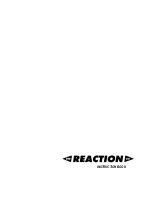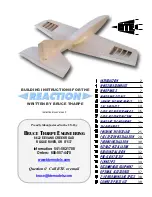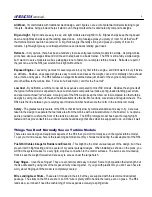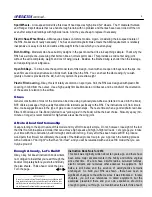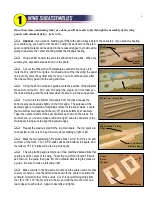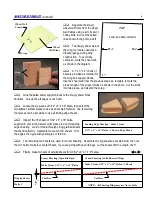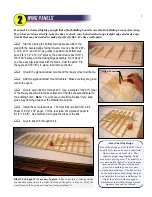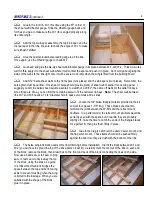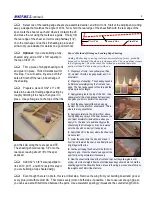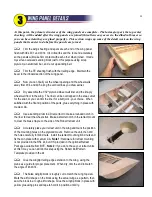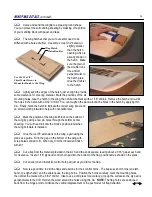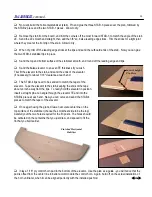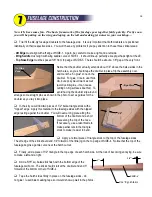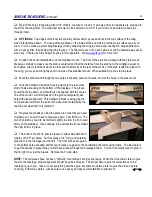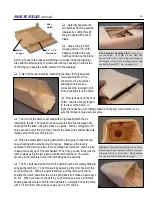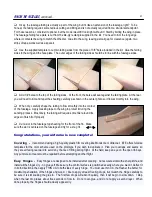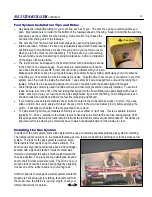
The tail feathers are simple, all-sheet surfaces that build fast and easy. You can build these parts any
time during construction. They will come in handy during fuselage construction when you are routing
the pushrods, so let's get them done now and set them aside for later.
Let's start with the vertical stabilizer (fin). I recommend yellow glue (aliphatic resin) for all of the sheet balsa tail
surfaces because it's easier to sand smooth. CA tends to leave hard ridges at the glue joints that are difficult to make
"invisible". Pin and glue the FIN-1, FIN-2, and FIN-3 parts over the plan, being careful to align the bottom edges.
Cut the front fin post from the 5/16" x 1/2" balsa stick provided
in the kit. You can leave the top end of the stick long; it will be
trimmed later. The bottom end of the stick should match the angle
shown on the plan.
Now add the FIN-4, FIN-5, and FIN-6 pieces, again aligning
their bottom edges. Allow to dry
Remove the fin from the board and carefully sand the top edge
smooth and straight. Pin the fin over the drawing again and add the
FIN-7 piece. You want the front/forward end of FIN-7 to match the
plans. When dry, remove the fin from the building board and trim the rear edge of FIN-7 flush with FIN-1.
Cut another stick for the rear fin post and glue it in place. When dry,
trim the top end flush with FIN-7. You will also need to add a tiny scrap of
balsa at the front point of FIN-6
Sand both sides of the fin smooth. I like to attack this with an 80-grit
sanding block until the glue joints are virtually smooth followed up with
150-grit. Using this process, you may sand off up to 1/32" from the
nominal wood thickness of 5/16", which is acceptable. Round off the fin
LE, but leave the front tip squared off as shown in the photo.
Cap both ends of the rudder with 5/16" sq. balsa. When dry, sand the caps to match the rudder contour. You will
notice that the TE thickness increases near the tip. It's okay to leave it that way, but purists (like me) will want an even
thickness along the entire TE. This is actually fairly easy to do using a few swipes of a sanding block. A carefully
drawn line, centered on the TE, will help guide your work and indicate that both sides have been sanded evenly.
NOTE:
The actual thickness of the TE is not critical, but I do recommend that you leave it squared off, which is less
likely to flutter than a TE that is rounded off. The recommendation holds for all of the R54's control surfaces.
Temporarily tape the rudder to the fin, using the plans to accurately position the bottom edge of the rudder. Sand
the top of the rudder to match the contour of the fin.
Inlay a 1/16" ply control horn pad in the right side of the rudder using the plan as a guide. Do not install the
rudder control horn at this point - it will be installed later to align with the end of the pushrod.
Finished Vertical
Stabilizer
Add Scrap
14
Summary of Contents for Reaction 54
Page 1: ...INSTRUCTION BOOK...

